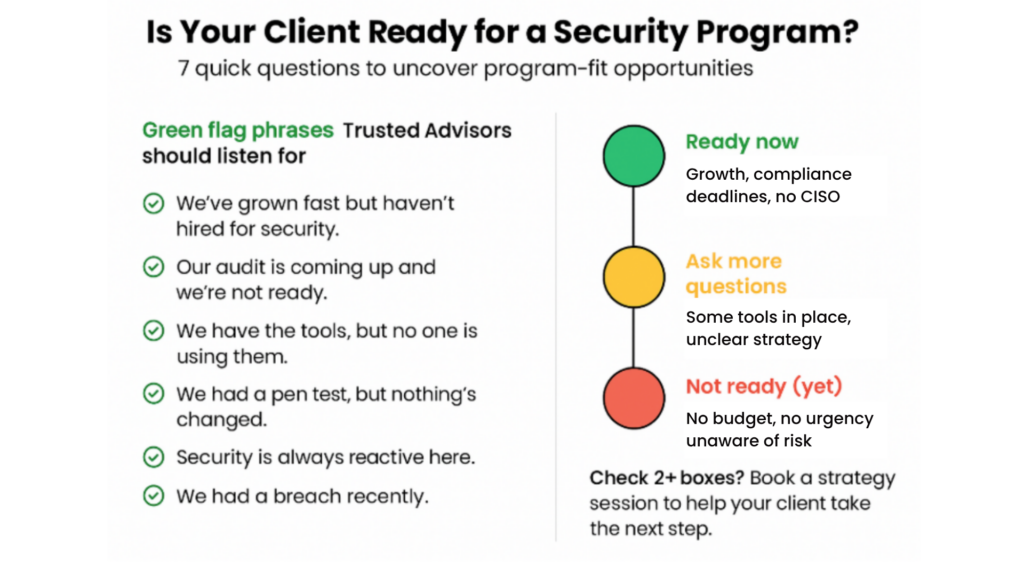From Compliance to Confidence: The Real Benefits of Managed Cybersecurity Services

While flashy breaches make headlines, the real story isn’t fear—it’s momentum. Companies are investing in cybersecurity not just to avoid risk, but to build trust, unlock compliance wins, and scale without hesitation. In fact, businesses that integrate cybersecurity into their broader strategy see up to a 20% improvement in operational efficiency. The managed cybersecurity services benefits behind these results include always: on protection, expert guidance, and scalable solutions tailored to evolving business needs.
Yet too often, security is treated like a fire drill—rushed through during compliance season or after something goes sideways. That approach might check a box, but it won’t move the needle.
In today’s threat landscape, cybersecurity isn’t a luxury or an afterthought—it’s a business imperative. With cyberattacks growing more sophisticated, compliance getting more complicated, and boards demanding visibility into cyber risk, clients are seeking more than just another tool or one-time fix.
They need a partner. They need a security program.
For Trusted Advisors, that’s where the opportunity comes in. Clients are ready for a new conversation. One that shifts from reactive, project-based security to a proactive, outcomes-driven model. Managed cybersecurity services are the engine behind that shift—and when framed the right way, they practically sell themselves.
So we’re not going to hit you over the head with jargon or fear tactics. We’re going help you spot the signs, ask better questions, and show up like the strategic advisor your clients actually need.
The evolution of managed cybersecurity: From MSSP to full program partner
Let’s be honest: the legacy MSSP model doesn’t cut it anymore. Forwarding alerts and bolting on tools isn’t enough. Clients want a partner who understands their business, anticipates their challenges, and integrates security into their operations.
That’s where managed cybersecurity programs come in. They’re not about feature lists or tech stacks—they’re about outcomes that matter to leadership.
What are managed cybersecurity services (and why are they different)?
Think of managed cybersecurity services as the first stop of your client’s security program. They bring strategic guidance, monitoring, compliance muscle, and the hands-on help needed to actually get things done.
They’re not just “monitoring services” or glorified alert machines. They’re a living, breathing part of your client’s risk and growth strategy. The best ones act like an internal team by augmenting—without the internal cost.
Key traits of modern managed services:
- Outcome-oriented: Think maturity models, not checklists
- Integrated: Security that fits the business, not fights it
- Hands-on: Not just advice—execution
This isn’t a new version of the same old service. It’s a fundamentally better way to help clients scale securely.
This isn’t security theater. It’s the real deal.
The top benefits of managed cybersecurity services
Let’s reframe security from a cost center to a value creator. Here’s what clients really get:
1. Predictable, scalable costs
No CFO wants security surprises. A managed program gives clients a fixed monthly cost they can plan around—unlike the panic-hiring and emergency spending that comes after a breach.
Real talk: Incident response costs for a mid-size breach can hit six figures. Managed programs help your clients avoid that in the first place.
2. Faster compliance readiness
Regulations are only getting trickier. Managed services bring continuous compliance management into play: policies, audits, documentation, done. Your clients stay ready without staying up all night.
SOC 2, HIPAA, PCI-DSS—they’re more than just acronyms; they’re gatekeepers to business deals. Managed programs help clients hit those marks without scrambling.
3. Executive-level security leadership
Hiring a full-time CISO? For some clients, that might be a fantasy. Managed services bring vCISO leadership to the table—strategy, board reporting, roadmaps—without the six-figure price tag.
Bonus: A strong vCISO doesn’t just help the IT team. They help the business make smarter, faster, risk-aligned decisions.
4. Ongoing visibility and improvement
Security isn’t a one-and-done game. Managed services deliver metrics, KPIs, updates, and clear progress reports. Your clients get better every month.
Pro tip: This gives leadership something to show the board—and justification for continued investment.
5. Streamlined vendor and tool management
Say goodbye to tool sprawl and security spaghetti. Managed programs reduce noise, consolidate vendors, and ensure tools are actually used (not just collecting virtual dust).
Most companies have 50+ security tools. Managed programs help them untangle the mess.
6. Enhanced detection and response
Detection is just the start. Managed programs go further with response plans, playbooks, and real action—fast.
Response time matters. Minutes vs hours can mean the difference between an inconvenience and a catastrophe.
7. Immediate ROI and reduced risk
Security incidents are expensive. So is bad compliance hygiene. Managed services pay off by reducing both—and freeing up internal teams to focus on what they do best.
Reminder: Every dollar spent proactively saves 4-5x in reactive costs.
How to spot a client that needs a security program
The good news? You don’t need to memorize CVEs or decode tech stacks. Just listen for these signals:
- They’re growing fast but haven’t hired for security
- They’re prepping for audits (SOC 2, HIPAA, PCI, etc.)
- They’ve had a breach or close call
- They’re moving to the cloud, merging, or restructuring
- They’re saying things like:
- “We had a pen test, but never did anything with it.”
- “Security is always reactive here.”
- “We have tools, but no one to run them.”
If that sounds familiar, you’ve got a program opportunity.
Handling common objections
Clients will have questions. That’s a good thing. Here’s how to respond with confidence:
- “We already have an MSP.”
Awesome—do they handle security leadership, policy development, incident response, and compliance tracking? - “We’re using a few tools already.”
Perfect. Managed services don’t replace tools—they make them work smarter together. - “It seems expensive.”
The cost of inaction is usually higher. Managed programs often reduce existing spend by replacing fragmentation with alignment.
Changing the conversation: Projects vs. programs
You’re not just selling a service. You’re enabling transformation.
| Old Way | New Way |
| “Want a pen test?” | “What’s your plan for continuous security maturity?” |
| “Here’s a vendor.” | “Here’s a partner that acts as your security team.” |
| “Try this tool.” | “Let’s talk about how to orchestrate and optimize what you already have.” |
By elevating the pitch from a task to a transformation, you show clients what’s possible.
Real-world wins: Security programs in action
Let’s bring it home with a few real client wins from businesses who went all in on managed cybersecurity programs.
Riva Health – Healthcare Platform
Why they needed help: Rapid growth, HIPAA challenges, and a need to secure patient data fast.
Outcomes:
- Full HIPAA compliance
- Security oversight without hiring a full team
- Peace of mind for investors and stakeholders
FilmRise – Media & Entertainment
Why they needed help: Cloud-based team, ransomware worries, no dedicated security staff.
Outcomes:
- Better detection + faster response
- Simplified vendor management
- More confidence at the executive level
Why all this matters for Trusted Advisors
This isn’t just a smarter sell. It’s a stickier one.
When you shift clients from one-off projects to managed programs:
- You move from vendor to strategic partner
- You create ongoing revenue instead of one-time payouts
- You differentiate yourself in a sea of cookie-cutter referrals
And here’s the kicker: you don’t have to be a cybersecurity genius. Just ask the right questions, listen, and bring in the right people.
Checklist: Is your client ready for a managed cybersecurity program?
Want to know if your client is ready for a security program? Use this 3-tiered conversation starter to guide your discovery:
🟢 Green Light: Strong indicators your client is ready now
- “We’ve grown fast but haven’t hired for security.”
- “Our audit is coming up and we’re not ready.”
- “We’ve had a breach or near miss.”
🟡 Yellow Light: Mild indicators—ask follow-up questions
- “We’ve got the tools, but no one’s really managing them.”
- “We had a pen test, but nothing changed.”
- “We’re reactive when it comes to security.”
🔴 Red Light: May need more education or time
- “We don’t see cybersecurity as a priority right now.”
- “Our IT team has it covered.”
- “We’re not concerned about compliance.”
If you hear 2 or more green or yellow phrases, it’s time to dig in. These are signals that a security program isn’t just needed—it’s overdue.

Next step: Get in the game
Pull up your client list. Highlight the ones with change happening—growth, risk, compliance, or all three. Then take the next step.
Security doesn’t have to be overwhelming. Or siloed. Or slow.
Help your clients do it right—and become their go-to for what’s next.
